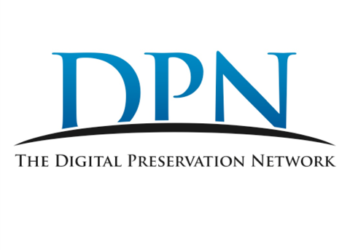While the coverage of scholarly communications in recent months has focused more and more on the breaking news around Read & Publish and Plan S, there are another key set of developments taking place in parallel. Green open access, and in particular the role of institutional repositories in serving up preprints and other journal article artifacts, is going through some substantial transitions as well. Yesterday, news broke that DuraSpace and Lyrasis are merging. An important development for institutional repositories and related library systems, this is also yet another example of organizational consolidation among membership organizations in the library community in particular.
DuraSpace and Lyrasis provide important collaborative capacity for the library and scholarly communication communities. My colleagues and I have been involved in several ways. Kevin Guthrie, the CEO of my employer ITHAKA, serves as a Lyrasis trustee. Several years ago, Ithaka S+R provided strategic advisory services to an earlier reorganization effort that included the same parties to the present transaction (more on that below). And during the 2017-2018 year, I led Ithaka S+R’s role in a strategic advisory project for Lyrasis about museum collection management. Yesterday, just a few hours after the intent to merge was announced, I had the opportunity to interview the CEOs of both organizations, Robert Miller of Lyrasis and Erin Tripp of DuraSpace. If the merger is completed as expected later this winter, Miller will remain CEO of the combined entity.
Interestingly, both Lyrasis and DuraSpace are the products of mergers during the post-2007 economic downturn. Lyrasis is the offspring of the shotgun wedding of several of OCLC’s “regional networks” in 2008-2009. DuraSpace is itself the offspring a 2009 merger of Fedora Commons and the DSpace Federation, organizations that each fostered an open source preservation platform for scholarly content. Now, the two successor organizations are themselves merging during the latest period of collaborative reorganization, which has already included announcements that I have chronicled about DPLA and DPN.
Institutional Repositories
At its heart, DuraSpace is an institutional repository provider. It facilitates several open source projects, including the dspace and Fedora repository frameworks and the VIVO faculty profile showcasing service. It produces revenue through memberships and online hosting solutions, which in turn allow it to reinvest in the open source projects.
The marketplace for institutional repositories was upended by the Elsevier purchase of bepress and its Digital Commons platform. DuraSpace had been one of the most important providers of institutional repository software, including its open source tools dspace and Fedora. But some have felt that it was falling behind with a model for open source software that did not initially have a hosted offering, let alone a cloud-based multi-tenant model such as the one that bepress had developed. As I wrote at the time of the bepress acquisition, “libraries adopting standalone institutional repositories are moving in exactly the wrong direction strategically” if more integrated workflow solutions will emerge instead.
Over the year and a half since the bepress acquisition, there have been several key developments in the institutional repository sector. Ex Libris has announced Esploro, which it positions as leapfrogging the traditional institutional repository with a workflow solution. CERN library systems spinoff TIND offers an institutional repository and related research data management service; the University of Chicago recently migrated to TIND’s service and away from from a DuraSpace offering.
Open Source Software
While DuraSpace’s product category has been institutional repositories and related scholarly communication tools, its role has been to facilitate the development of open source software and provide related hosting services. Facilitating open source communities is not a simple proposition, especially in a relatively small sector.
To be fair, several community open source projects are far along or seem to offer real promise. ArchivesSpace is a platform for managing and providing access to archives and other special collections. It has 350 members and has continued to be actively developed based on community contributions. Lyrasis has served as its organizational home. And, the CoKo Foundation has attracted some significant interest, including from our own Phill Jones, for its plans to provide open shared infrastructure for scholarly publishing. Open source is not by any means to be dismissed.
At the same time, open source is no panacea. To whatever extent the DuraSpace offerings have kept up with contemporary needs and expectations, it is clear that open source models, when adapted to suit the needs of the scholarly communication sector, seem to optimize for community control over marketplace agility. The OLE library systems initiative fell behind in both architecture and execution in the period when the marketplace was shifting to cloud-based multi-tenant models and the collaboration possibilities that they enabled. It was eventually folded into the FOLIO initiative, with more centralized leadership and a hybrid-commercial development sprint, which even so has yet to be brought into production by a major library let alone a consortium.
And so I was impressed to hear Miller and Tripp reflect quite thoughtfully on their organizations’ respective roles in facilitating open source communities. Lyrasis spearheaded a recent project on sustainability strategies for open source projects, an area they have been trying to emphasis. Tripp emphasized the importance of community governance, including a degree of control and autonomy. I am confident that providing an organizational home without trying to exert product-level control is the right way to foster and sustain an open source community.
At the same time, it is interesting to see this merger assembling a number of pieces of open source infrastructure that can support the collecting and preservation communities. Should each of these platforms remain separate from one another? That will maximize their autonomy. Or is there strategic benefit in finding opportunities to integrate across them and drive towards scale at a product level? It seems to me to be an open question about whether community governance and strategic agility can complement one another.
Second Time the Charm?
Lyrasis will be the surviving entity once the merger is completed, and the work and ambitions of the merged entity extend well beyond open source platforms. To take two examples, Lyrasis has served as a consortium for content licensing and provides a variety of leadership and innovation programs. But there can be no mistake that an important part of the logic of this merger is the emphasis on platforms.
This is not the first time that Lyrasis and DuraSpace have considered joining up. A previous courtship in 2016 led to a broken engagement. In the interim, there have been several changes in key leadership roles and Lyrasis has continued to strengthen its engagement with open source and platforms. Perhaps most importantly, as both Miller and Tripp emphasized when we spoke, is the sense of an increasingly fraught competition for membership fees from libraries, which are looking to generate efficiencies across their collaborative investments and reduce costs. Organizations have struggled to achieve their membership and other fundraising targets, a dynamic that produces a growing incentive for the various kinds of reorganizations that we are seeing in community collaborations.
But whereas DPN’s shutdown and DPLA’s pivot were necessitated by organizational struggles, for DuraSpace and Lyrasis there seems to be a much stronger element of strategic fit and growth opportunity. Miller and Tripp spoke a bit to me about opportunities to scale the investments made principally by larger organizations in support of DuraSpace communities with the broader organizational reach of the Lyrasis membership. They spoke about a major shared interest in international expansion.
With any merger, there is a risk of community concern or discomfort. I understand that the organizations plan to leave all programs and governance models in place for the foreseeable future, planning to launch a consultative listening process to examine whether there are any kinds of changes to be made. One of the pitches of the merger is the opportunity to reduce the membership burden that libraries face, so there may be reason to hope that some efficiencies can be found that will yield cost savings to members. Scale and efficiencies must be carefully balanced with the imperatives for community governance that were mentioned above.
I am heartened to see elements of strategic opportunity, moreso than organizational failure, as the driving force behind DuraSpace and Lyrasis’s plans to merge. Open source has proved to be a complicated terrain for the scholarly communication sector, only increasingly complex given the intensifying competition for platform services with integrated workflows. For this reason, strong organizational homes that can scale their efforts and drive towards strategically coherent directions will be vital. I will be following with interest whether this newly combined enterprise can offer coherent competition to the leading commercial providers of institutional repositories, library systems, and similar platforms for collecting organizations. And also whether it will seek yet greater scale in its efforts to do so.
Discussion
4 Thoughts on "More Scholarly Communications Consolidation as Institutional Repository Provider DuraSpace Merges into Lyrasis"
One specific positive of the strengthening of the economies of scale I expect to come from this merger is greater opportunity for libraries of different scales and financial resources working together. Open source projects in particular need solid financial planning, but great ideas and leadership are not limited to libraries with larger budgets or staff size. Continuing to increase the opportunity for diversity of the community will be a great outcome.
Thanks Tim. I definitely think that there are meaningful opportunities to expand the scope of engagement, and perhaps even the community governance, for some of the open source initiatives as part of this merger. I wonder if that will improve (or detract from) these initiatives’ strategic focus and agility.
It seems to me that the archiving business with platforms services with integrated workflows is becoming a lucrative one. A cost that is being passed on to the general public or to students in the form of increased fees/tuition. What happens when a library decides to change from one service to another? Does the faculty have to learn an entirely new submission system? Do patrons have to learn a new access system?
I think the next big venture will be a search engine that catalogues all the various repositories – and of course for a fee – will be available to all.
To think OA was touted as free access!
There are several cross-repository search tools, including SHARE (https://share.osf.io/) and BASE (https://www.base-search.net/). Both are freely available to use and are supported if I understand correctly by libraries.




